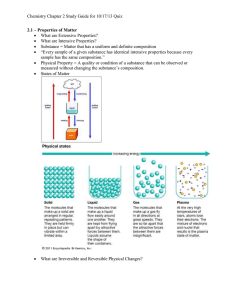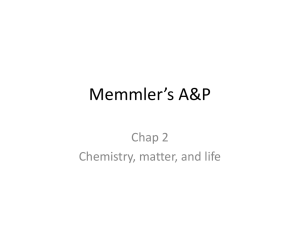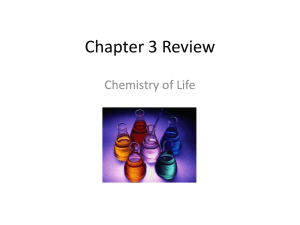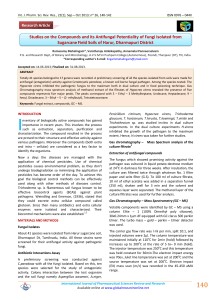Solids and Liquids
advertisement
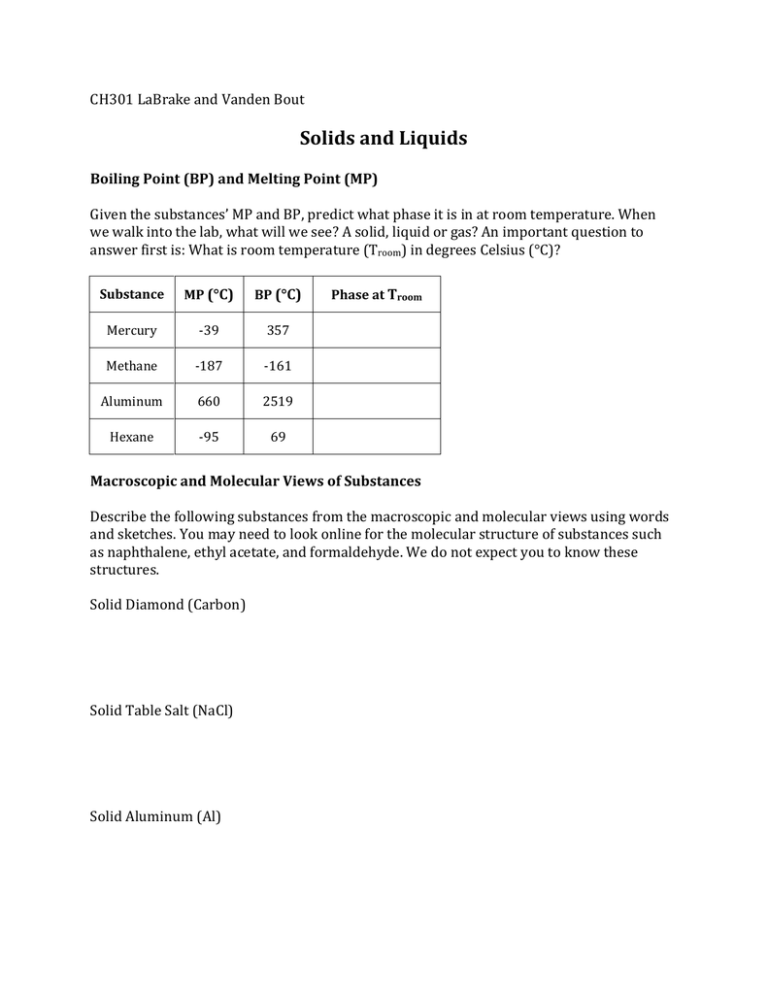
CH301 LaBrake and Vanden Bout Solids and Liquids Boiling Point (BP) and Melting Point (MP) Given the substances’ MP and BP, predict what phase it is in at room temperature. When we walk into the lab, what will we see? A solid, liquid or gas? An important question to answer first is: What is room temperature (Troom) in degrees Celsius (°C)? Substance MP (°C) BP (°C) Mercury -39 357 Methane -187 -161 Aluminum 660 2519 Hexane -95 69 Phase at Troom Macroscopic and Molecular Views of Substances Describe the following substances from the macroscopic and molecular views using words and sketches. You may need to look online for the molecular structure of substances such as naphthalene, ethyl acetate, and formaldehyde. We do not expect you to know these structures. Solid Diamond (Carbon) Solid Table Salt (NaCl) Solid Aluminum (Al) Solid Naphthalene (C10H8) Liquid Water (H20) Liquid Ethyl Acetate (CH3COOCH2CH3) Liquid Hexanes (C6H14) Gaseous Formaldehyde (CH20) Properties of Liquids 1. Rank the following compounds by BP, from lowest to highest: glucose, ethanol, H2O. 2. Rank the following compounds by vapor pressure, from lowest to highest: hexane, hexanol, hexanal. 3. Rank the following compounds by viscosity, from most viscous to least: C5H12, CH4, C3H8, C2H6, C4H10. 4. Rank the following compounds by surface tension, from lowest to highest: CHBr3, CHF3, CHCl3. 5. Rank the following compounds by strength of IMFs: C2H6, H2O, CH4, NH3. Then say how each of the following solution properties varies with IMF strength. a. Boiling point b. Viscosity c. Vapor pressure d. Surface tension Properties of Solids 1. What type of solid are each of these? Why do you think this? a. Methane b. Sulfur dioxide c. Iron d. Graphite e. Silicon dioxide f. Calcium Bromide g. Lithium 2. Arrange the compounds BaCl2, diamond, H2, HF in order of increasing expected MPs.



